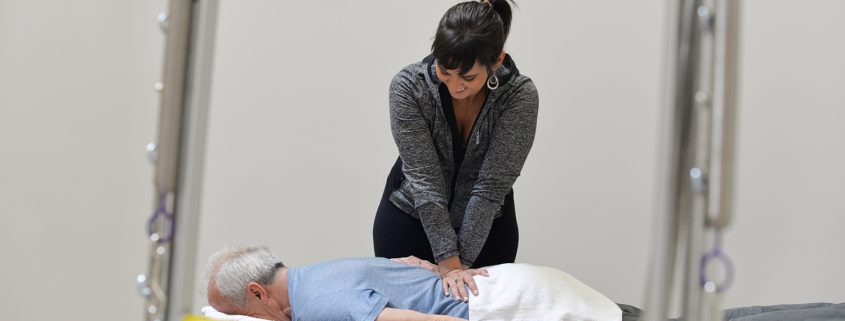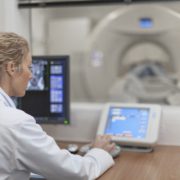Failed Back Surgery Syndrome? You’re not alone.
Back pain impacts approximately 80% of the population. The response to that has been more and more back surgeries being performed each year. However, despite more surgeries being performed, people aren’t having any less back pain. In fact, those that do get back surgery only have success rates of 50%. After a few years, their results are no less successful than those who chose to have conservative interventions. Such as physical therapy and exercise, for the same problem. If you’re experiencing failed back surgery syndrome, you’re not alone.
The American Society of Anesthesiologists estimates that 20-40% of all back surgeries fail. That statistic gets worse for patients who have a second surgery. Estimating that only 30% of second back surgeries are successful. Should you have a 3rd or 4th surgery your success rate plummets. Only 5-15% of 3rd and 4th back surgeries have successful outcomes. Despite these statistics, approximately 500,000 Americans are still undergoing back surgery every year to relieve their pain. The Agency for Healthcare Research and Quality estimates that back surgery costs us $11 billion annually. That’s a lot of money to spend on something that isn’t even guaranteed to work.
So why are we spending so much money on back surgery when for almost half of these people (and in some cases more), it’s not even successful?
Problem number one is if you’re dealing with debilitating back pain that is impacting your life and happiness. Surgery is often going to be a very attractive option. If you’re told surgery will take away your back pain, why wouldn’t you want to choose this approach?
The second major problem is with the way back pain is typically diagnosed. Nowadays, doctor’s rely on imaging (X-rays or MRI’s) to decide what’s wrong with you and to formulate a treatment plan. They rarely take the time to talk to you about the events that led to your back pain, examine the way you move, or make certain that what shows up in your images is actually responsible for your pain.
For example, if they see a bulging disc and you’ve got coinciding leg pain – they assume that’s the source of your problem and recommend you cut it out. If you’ve got severe degenerative changes or stenosis in your spine, they recommend fusion.
What’s the problem with this approach?
Things like bulging discs and degenerative changes show up in MRI’s and X-rays, and are quite normal. They occur naturally as you age. It’s no coincidence that before the invention of MRI’s – there were far less surgeries being performed. What we do know is that 50% of the time, back surgery fails. Could it be because we are going in and tampering with structures that have nothing to do with the source of our back problem?
Let me explain.
We now know from research that 70-80% of all back pain is considered “mechanical” in nature. Meaning, the root cause or your pain is due to restrictions in your joints. Or restrictions in soft tissue that impact the way you move. This, in turn, can make surrounding structures very angry and lead to pain. Findings such as bulging discs, disc degeneration, and stenosis are all a normal part of aging and there are plenty of people out there who have these exact same findings on their images – yet have no pain at all. That’s because for some, their joints move fully and freely, and these (normal) abnormalities don’t give them any trouble. But for those whose joints do not move well, that bulging disc has a better chance of getting irritated or causing something else (like a nerve) to get irritated.
Removing the disc, or fusing your spine, won’t take away your underlying mechanical movement problem. It will put a temporary band aid over it until the problem either re-occurs – or shows up in another section of your spine – often years later.
Does this help you to understand why so many back surgeries are unsuccessful?
It’s such a common occurrence they even have a name for it – “Failed Back Surgery Syndrome”.
When your back pain is due to a mechanical problem – such as an underlying movement or mobility issue – surgery will not fix this. Additionally, MRI’s and X-rays can’t accurately diagnose it. When you do have surgery, you end up prolonging your problem further. Because you think that just because your back pain is gone, your problem is gone.
It’s only a matter of time before your pain returns, and it’s usually worse. Plus, your mechanical problem becomes more challenging to address once you’ve had surgery. But the good news is that it’s still possible to address it without a second back surgery. And it’s possible to address debilitating back pain without a first surgery altogether.
So if you’ve got back pain and are considering surgery, definitely think twice and be sure you’ve been fully examined by a mechanical back pain expert first. And if you’ve already had back surgery and it failed, still talk to a mechanical back pain expert.
Remember that the odds of success for second and third back surgeries are very low. Even after a failed back surgery, it’s still possible to learn how to address back pain on your own and get back to doing everything you love.
Did you know that we specialize in back pain – and have helped thousands of folks learn how to treat back pain completely on their own?
CLICK HERE to talk to someone from my team – especially if you’re considering back surgery and want to make sure you’ve explored ALL possible alternatives first.
Dr. Carrie Jose, Physical Therapist and Pilates expert, owns CJ Physical Therapy & Pilates in Portsmouth and writes for Seacoast Media Group. To request a free copy of her guide to back pain CLICK HERE or to get in touch, email her at [email protected].












